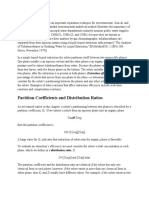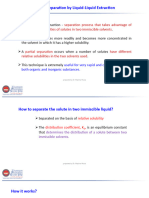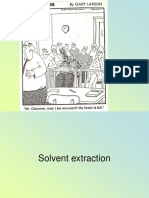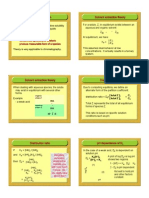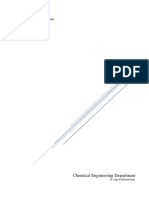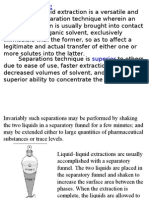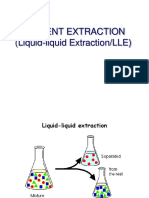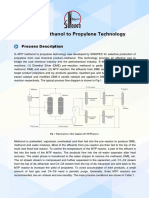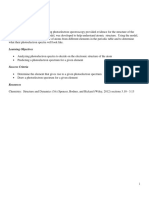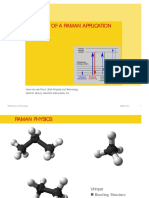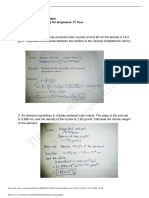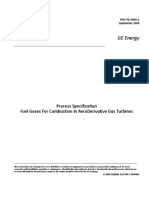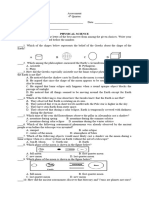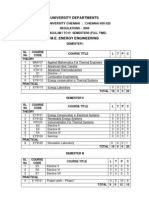0% found this document useful (0 votes)
111 views16 pagesExtraction Notes
This document discusses liquid-liquid extraction processes. It explains that liquid-liquid extraction involves transferring a compound from an aqueous phase into an immiscible organic phase. Key factors in choosing an extraction solvent are that it be immiscible in water, selective for the analyte, have an appropriate density difference from water, minimal viscosity, and be inexpensive. The distribution coefficient KD indicates whether a compound distributes mainly in the organic or aqueous phase after extraction. Successive extractions and the amount of solvent used can affect the percentage of analyte extracted from the aqueous phase.
Uploaded by
Lindelwa MthembuCopyright
© © All Rights Reserved
We take content rights seriously. If you suspect this is your content, claim it here.
Available Formats
Download as PDF, TXT or read online on Scribd
0% found this document useful (0 votes)
111 views16 pagesExtraction Notes
This document discusses liquid-liquid extraction processes. It explains that liquid-liquid extraction involves transferring a compound from an aqueous phase into an immiscible organic phase. Key factors in choosing an extraction solvent are that it be immiscible in water, selective for the analyte, have an appropriate density difference from water, minimal viscosity, and be inexpensive. The distribution coefficient KD indicates whether a compound distributes mainly in the organic or aqueous phase after extraction. Successive extractions and the amount of solvent used can affect the percentage of analyte extracted from the aqueous phase.
Uploaded by
Lindelwa MthembuCopyright
© © All Rights Reserved
We take content rights seriously. If you suspect this is your content, claim it here.
Available Formats
Download as PDF, TXT or read online on Scribd
/ 16

